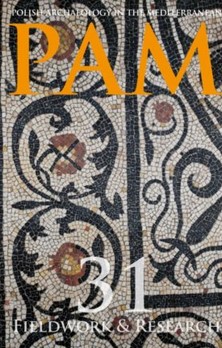Post-New Kingdom topography and chronology of the Hatshepsut Temple at Deir el-Bahari in light of new archaeological evidence
Post-New Kingdom topography and chronology of the Hatshepsut Temple at Deir el-Bahari in light of new archaeological evidence
Author(s): Patryk ChudzikSubject(s): Archaeology, Cultural history, Historical Geography, Prehistory
Published by: Wydawnictwa Uniwersytetu Warszawskiego
Keywords: Deir el-Bahari; Temple of Hatshepsut; Third Intermediate Period; rock-cut tomb; Roman era; reuse;
Summary/Abstract: Around 1000 BCE, an earthquake brought down many temples in Western Thebes, thus putting an end to the cult centre at Deir el-Bahari which had been a key site for the celebration of the Beautiful Feast of the Valley all through the New Kingdom. Within a few dozen years the deserted chapels and rooms of the Hatshepsut temple were turned into a burial ground. The necropolis established on the ruins of one of the most famous temples of Egypt was first excavated in the 19th century; however, current work by the Polish Centre of Mediterranean Archaeology University of Warsaw expedition in the Hathor cult complex of the temple of the female pharaoh has resulted in the discovery of a group of shaft tombs and a great number of burial remains. These new finds have instigated a revisiting of both the topography and the chronology of this reuse of the older monument, as well as a contextualization of the work of the early explorers which has gradually been forgotten partly through lack of proper documentation.
Journal: Polish Archaeology in the Mediterranean
- Issue Year: 1/2022
- Issue No: XXXI
- Page Range: 123-152
- Page Count: 30
- Language: English

